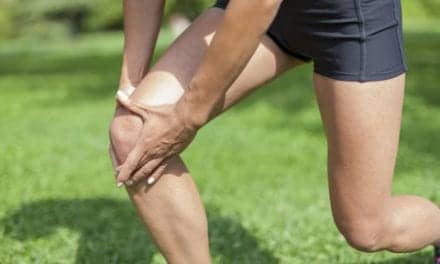Tai chi is often described as "meditation in motion," but it might well be called "medication in motion." There is growing evidence that this mind-body practice, which originated in China as a martial art, has value in treating or preventing many health problems, according to the Harvard Women’s Health Watch.
In this low-impact, slow-motion exercise, you go without pausing through a series of motions named for animal actions for example, "white crane spreads its wings"—or martial arts moves, such as "box both ears." As you move, you breathe deeply and naturally, focusing your attention—as in some kinds of meditation—on your bodily sensations. Tai chi differs from other types of exercise in several respects. The movements are usually circular and never forced, the muscles are relaxed rather than tensed, the joints are not fully extended or bent, and connective tissues are not stretched. Tai chi can be easily adapted for anyone, from the most fit to people confined to wheelchairs or recovering from surgery.
"A growing body of carefully conducted research is building a compelling case for tai chi as an adjunct to standard medical treatment for the prevention and rehabilitation of many conditions commonly associated with age," says Peter M. Wayne, assistant professor of medicine at Harvard Medical School and director of the Tai Chi and Mind-Body Research Program at Harvard Medical School’s Osher Research Center. An adjunct therapy is one that’s used together with primary medical treatments, either to address a disease itself or its primary symptoms, or, more generally, to improve a patient’s functioning and quality of life.
You don’t need to subscribe to or learn much about tai chi’s roots in Chinese philosophy to enjoy its health benefits, but these concepts can help make sense of its approach:
Qi—an energy force thought to flow through the body; tai chi is said to unblock and encourage the proper flow of qi.
Yin and yang—opposing elements thought to make up the universe that need to be kept in harmony. Tai chi is said to promote this balance.
A tai chi class might include these parts:
Warm-up: Easy motions, such as shoulder circles, turning the head from side to side, or rocking back and forth, help you to loosen your muscles and joints and focus on your breath and body.
Instruction and practice of tai chi forms. Short forms—forms are sets of movements—may include a dozen or fewer movements; long forms may include hundreds. Different styles require smaller or larger movements. A short form with smaller, slower movements is usually recommended at the beginning, especially if you’re older or not in good condition.
Qigong (or chi kung). Translated as "breath work" or "energy work," consists of a few minutes of gentle breathing sometimes combined with movement. The idea is to help relax the mind and mobilize the body’s energy. Qigong may be practiced standing, sitting, or lying down.
The benefits of tai chi are generally greatest if you begin before you develop a chronic illness or functional limitations. Tai chi is very safe, and no fancy equipment is needed, so it’s easy to get started.
Although tai chi is slow and gentle and doesn’t leave you breathless, it addresses the key components of fitness—muscle strength, flexibility, balance, and, to a lesser degree, aerobic conditioning. Here’s some of the evidence:
Muscle strength. In a 2006 study published in Alternative Therapies in Health and Medicine, Stanford University researchers reported benefits of tai chi in 39 women and men, average age 66, with below-average fitness and at least one cardiovascular risk factor. After taking 36 tai chi classes in 12 weeks, they showed improvement in both lower-body strength (measured by the number of times they could rise from a chair in 30 seconds) and upper-body strength (measured by their ability to do arm curls).
In a Japanese study using the same strength measures, 113 older adults were assigned to different 12-week exercise programs, including tai chi, brisk walking, and resistance training. People who did tai chi improved more than 30% in lower-body strength and 25% in arm strength —almost as much as those who participated in resistance training, and more than those assigned to brisk walking.
"Although you aren’t working with weights or resistance bands, the unsupported arm exercise involved in tai chi strengthens your upper body," says internist Gloria Yeh, MD, an assistant professor at Harvard Medical School. "Tai chi strengthens both the lower and upper extremities and also the core muscles of the back and abdomen."
Flexibility. Women in the 2006 Stanford study significantly boosted upper- and lower-body flexibility as well as strength.
Balance. Tai chi improves balance and, according to some studies, reduces falls. Proprioception—the ability to sense the position of one’s body in space declines with age. Tai chi helps train this sense, which is a function of sensory neurons in the inner ear and stretch receptors in the muscles and ligaments. Tai chi also improves muscle strength and flexibility, which makes it easier to recover from a stumble. Fear of falling can make you more likely to fall; some studies have found that tai chi training helps reduce that fear.
Aerobic conditioning. Depending on the speed and size of the movements, tai chi can provide some aerobic benefits. But in the Japanese study, only participants assigned to brisk walking gained much aerobic fitness. If your clinician advises a more intense cardio workout with a higher heart rate than tai chi can offer, you may need something more aerobic as well.
Selected resources
Tai Chi Health www.taichihealth.com
Tai Chi Productions www.taichiforhealth.com
Tree of Life Tai Chi Center www.treeoflifetaichi.com
[Source: Harvard Women’s Health Watch, Harvard Medical School]




